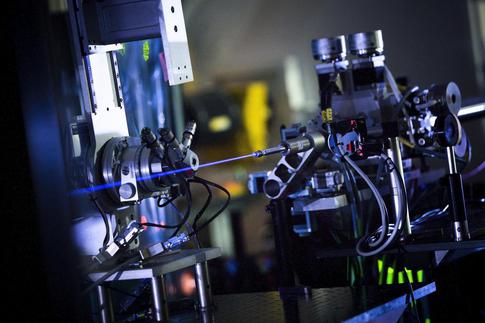XFEL: Tracking down quantum flickering of the vacuum
Tracking down quantum flickering of the vacuum

The X-ray beam of the European XFEL only becomes as clearly visible as in the photo in complete darkness and with an exposure time of 90 seconds. What we actually see are glowing nitrogen molecules hit by the beam.Source: European XFEL/Jan Hosan
Absolutely empty – that is how most of us envision the vacuum. Yet, in reality, it is filled with an energetic flickering: the quantum fluctuations. Experts are currently preparing a laser experiment at the HED experiment station of European XFEL intended to verify these vacuum fluctuations in a novel way, which could potentially provide clues to new laws in physics. A research team from the Helmholtz-Zentrum Dresden-Rossendorf (HZDR) has developed a series of proposals designed to help conduct the experiment more effectively – thus increasing the chances of success.
The underlying principle is that an ultra-powerful laser fires short, intense flashes of light into an evacuated stainless steel chamber. The aim is to manipulate the vacuum fluctuations so that they, seemingly magically, change the polarization of an X-ray flash from the European XFEL, i.e., rotate its direction of oscillation.
"It would be like sliding a transparent plastic ruler between two polarizing filters and bending it back and forth," explains HZDR theorist Prof. Ralf Schützhold. "The filters are originally set up so that no light passes through them. Bending the ruler would now change the direction of the light's oscillation in such a way that something could be seen as a result." In this analogy, the ruler corresponds to the vacuum fluctuations while the ultra-powerful laser flash bends them.
The team presents its findings in the scientific journal Physical Review D Physical Review D (DOI: 10.1103/PhysRevD.108.076005).
Source: HZDR. To the more detailed press release of HZDR
